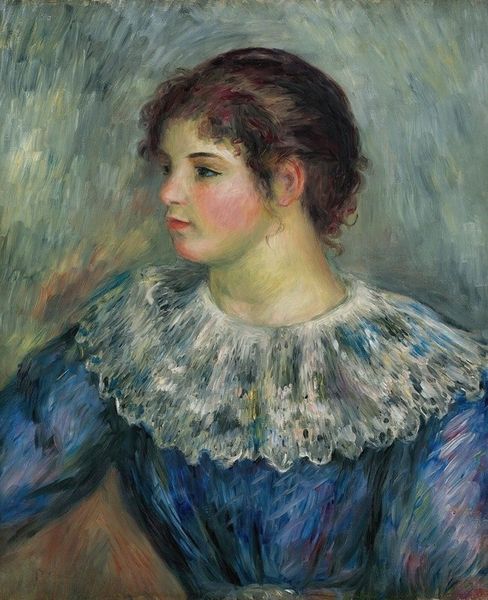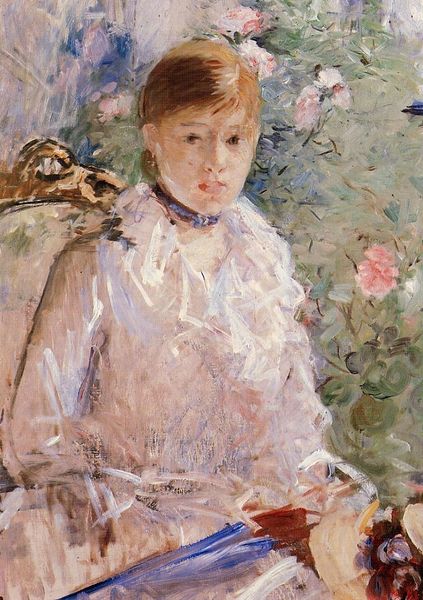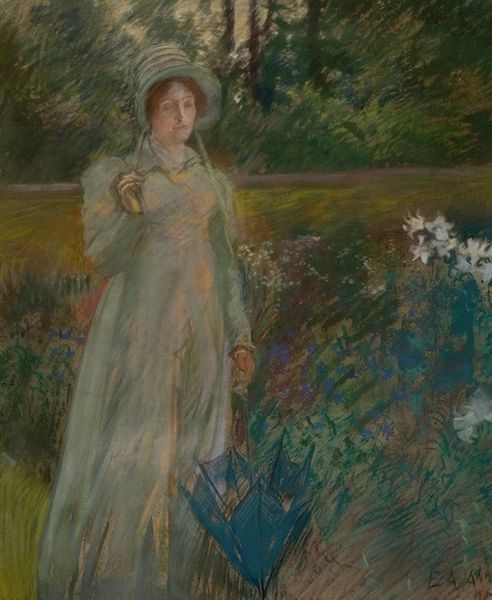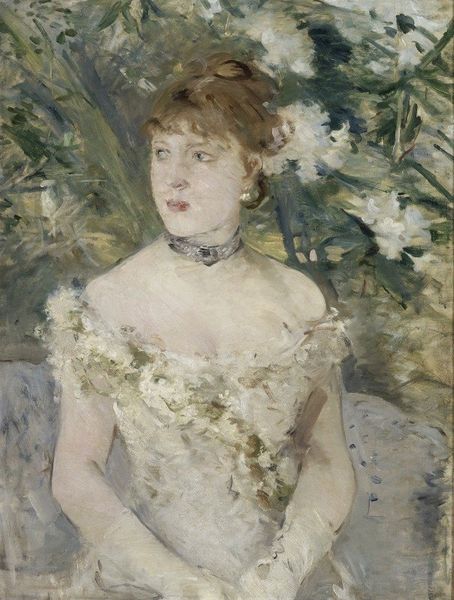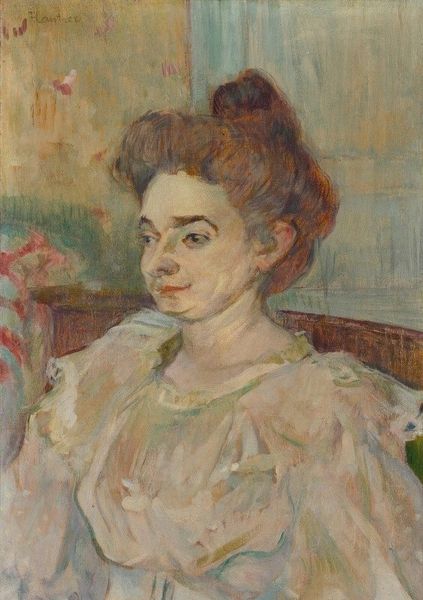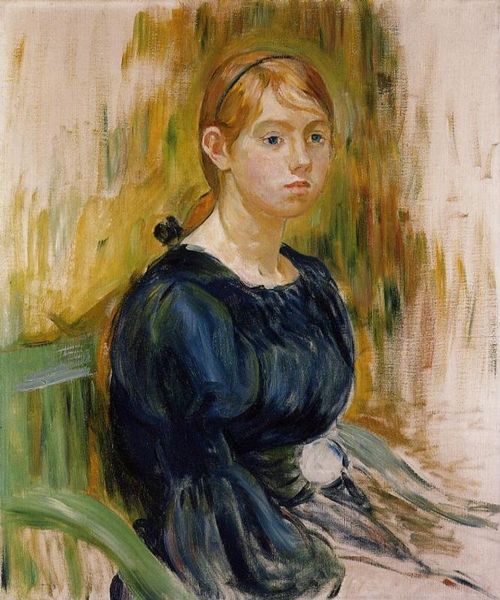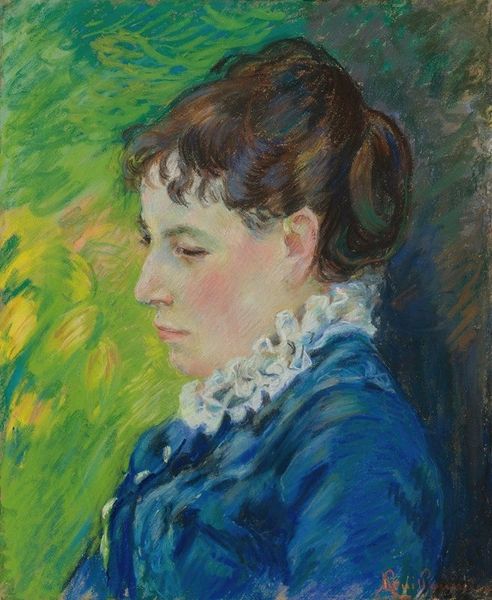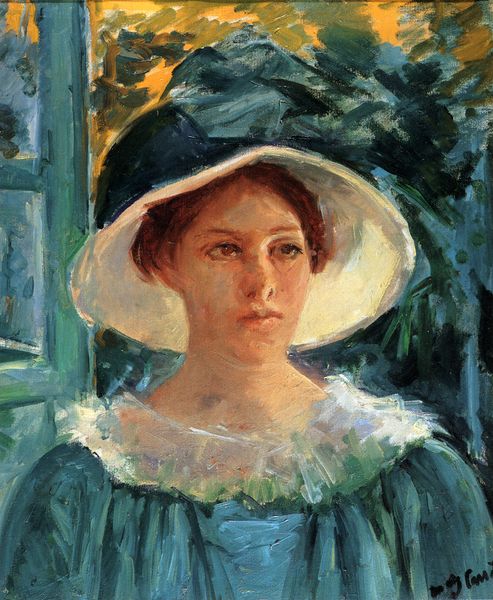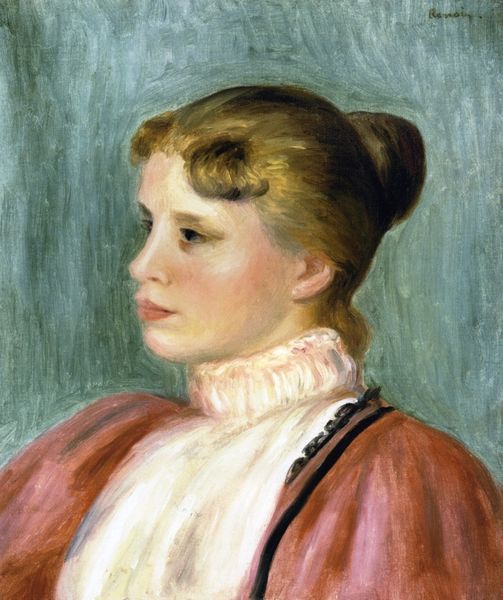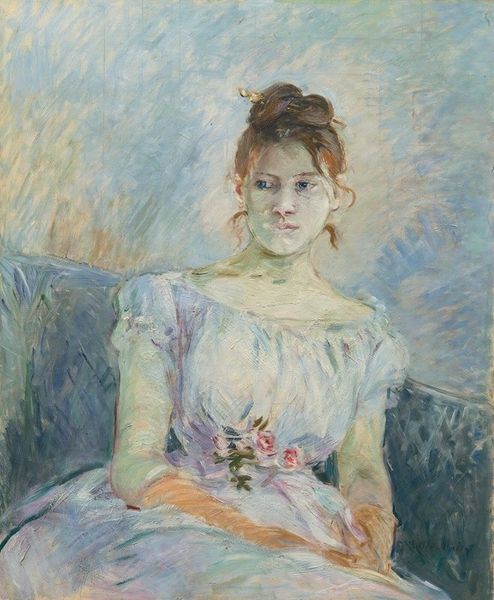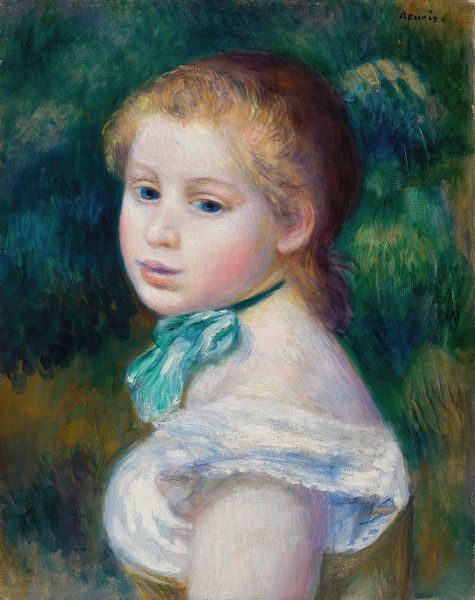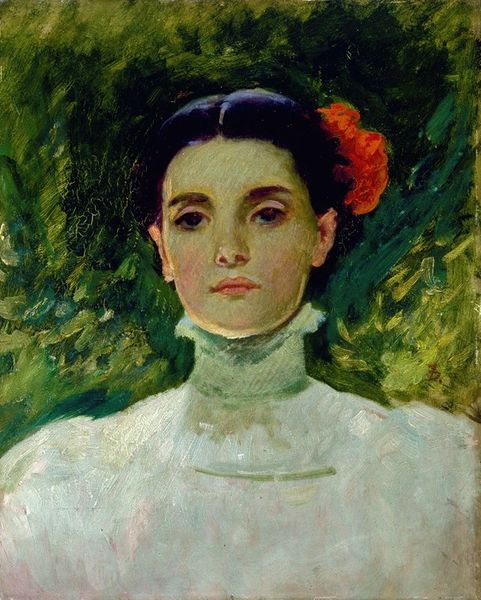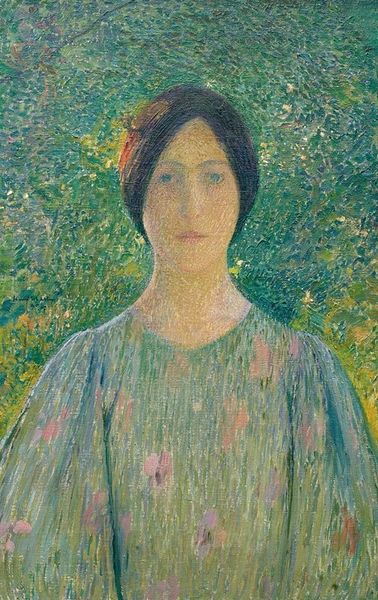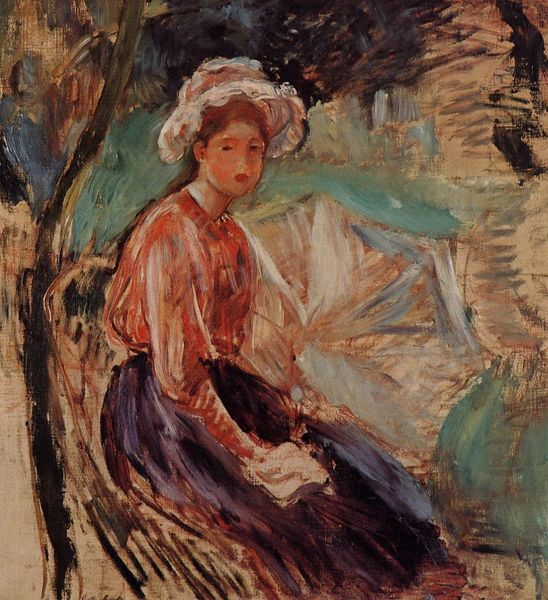
painting, oil-paint
#
portrait
#
figurative
#
painting
#
impressionism
#
oil-paint
#
oil painting
#
portrait art
Copyright: Public Domain: Artvee
Editor: Berthe Morisot’s "Alice Gamby En Buste," painted around 1890, is simply lovely! It feels so fresh and light with these short brushstrokes. How do you see this portrait in terms of Impressionist art of the time? Curator: This work offers an interesting view into the public and private life spheres of women artists during the late 19th century. Morisot was showing professionally, but portraiture, especially of women, tended to be regarded differently than historical painting or even landscape at the time. It touches upon what was deemed appropriate subject matter for women artists. Do you find anything distinct about how Morisot positions Alice, considering societal expectations and power dynamics prevalent at that time? Editor: That's fascinating! I hadn't thought about the subject matter as a conscious choice within those constraints. Looking at it again, there’s an intimacy here that feels different than a formal commission. Curator: Precisely. There’s a sensitivity to the portrayal that goes beyond simply capturing a likeness. Morisot, being a woman, could offer a unique female perspective which diverged from male gaze dominance in portraiture, providing a counter narrative on how women artists represented women. Do you find any connection between Morisot's portrait of Alice Gamby and, say, contemporaneous images of young bourgeois women in advertising? Editor: I can see that contrast! Commercial images feel…objectified, whereas Morisot's feels respectful and personal. Curator: It also points to the tension inherent in portraiture. It always occupies a social and cultural space, whether within the family or a gallery. Considering that these works later entered museums, they were then positioned in very particular, public arenas, affecting our access to, and, ultimately, understanding of female representation by female artists. Editor: I never considered the later museum context, so thank you. I feel that I’m perceiving something new today about both art history and women’s history! Curator: And hopefully with the understanding that these concepts intersect in many complex ways, influencing art-historical analysis, as well.
Comments
No comments
Be the first to comment and join the conversation on the ultimate creative platform.
